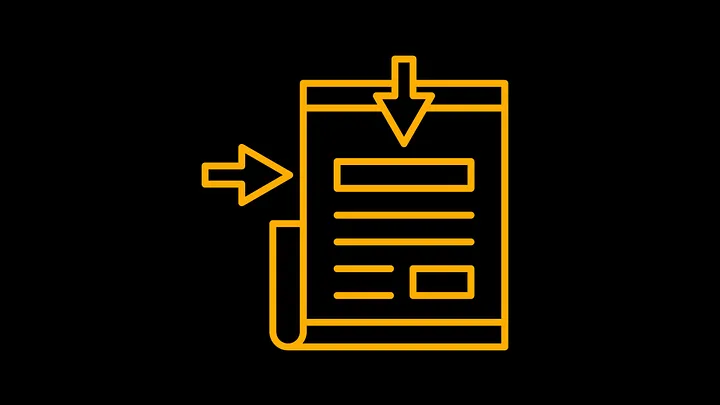How to Write Headlines That Grab Attention

Introduction to How to Write Headlines
Headline is very important in the process of attracting the attention of readers. When one is writing for a blog, news article, or an advertisement, the best way through which people can be attracted to your work is through a good heading. When done properly, a great headline will grab the users’ attention and compel them to read even more about the subject matter. Here in this article, we are going to discuss more about the right ways and some of the brilliant tips that one can use in order to create good headlines to fit one’s content.
Understanding the Importance of Compelling Headlines
Subheadings refer to the titles of the content sections you use to enhance the reader’s first impression. It is one of those catchy headlines that attract attention of the reader making them want to read more of the content of the article. Sometimes, an article may even contain apparently good contents and analysis but with poor headline, it will remain unnoticed.
Captivating titles dictate the level of engagement expected of the reader, and point at the benefits to be derived from a read that can include enlightenment on certain issues, a solution to a problem, or simple entertainment. They are the entrance to your material, and with no successful headlines, even high-quality contents may be unknown to the public.
The Psychology Behind Attention-Grabbing Headlines
Headline has a very crucial role which is influenced by the practice of psychology. To be more precise, our brains can be stimulated in specific ways: curiosity, urgency or appeal to emotions. These headlines that tend to evoke the specified psychological responses such as the use of question mark or problem- solving headlines can attract attention more easily. Knowledge in how people approach things helps in developing headlines that will appeal to readership so that they could go through the content of the article.
How to capture the readers’ attention with attention-grabbing headlines
Headlines using curiosity are effective strategies that most people need to apply in order to entice the reader. If you want to engage the readers, then it is beneficial to tempt them with questions, mystery or guarantee that they will receive information which is not disclosed at the moment. For example, Creating a Live Blogging Network on www.EVSas.com and the recent one, a captivating headline “Do You Know the Secret to Successful Marketing?”
provides interest and relevance by suggesting the existence of some secrets. However, they should not be too general due to risks of confusing the readers while leaving something that will open up their curiosity. This is to create a sense of desperation where the readers are compelled to click to get more information.
Using Power Words to Boost Headline Effectiveness
Phrase-calling or appeal terms refers to a set of words that are forceful that compel a reaction. A headline is ‘unbelievable’ whose words are highly charged and include ‘essential’, ‘ultimate’, ‘proven’. These words give a feeling or an impression of particular timeliness, passion, or significance that causes readers into performing something. When used in combination with topics, such Gray and Lewandowski’s power words make headlines catchy and grab the readers’ attention, so incorporating them into the list of tools any content writer’s arsenal will be helpful.
The Role of Numbers and Lists in Headlines
Numbers in headlines thus mean news and are good at attracting the attention of readers. Lists are popular since it avails a more simplified way of delivering information. They make it clear that the article contains a suggested plan and that the reader can easily use the information to make some changes immediately. For example, the title ‘5 ways to enhance SEO’ is direct, specific and practical. Numbers also matter because they signify that the content is not generalised and abstract and therefore, readers can easily judge on their own whether the article is worth reading or not.
Writing Headlines That Relate to the Reader’s Pain
It is observed that headlines, which link to solutions to some of the challenges that people experience in their day to day lives, are likely to hit the heart as well as the minds of the readers. The simplest way to wake within the audience then, is to outline what they do not know and what you provide which solves the problem.
For instance, one of the headlines, “How to Stop Procrastinating in Five Ways” is straight-forward, a problem-solution title. By identifying an issue and offering a remedy, it enables the readers to derive some value from it and, thus, have feelings that make them want to click on the link.
How to Make Your Headlines Clear and Concise
There needs to be a certain amount of clarity in selecting headlines as well. The length of the headline is a factor that could pose a problem for the people who intend to read it. Instead, it is better to use short keys as headlines with no more than several words to define the topic. This means that the layman or the person who is not so conversant with the terms of the trade should be able to understand the content of the article comfortably without having to look up for the definitions of the various remarkable terms used in it.
For instance, “Easy Ways to Improve Your Social Media Engagement” is quite direct and straightforward, and any person reading it would easily comprehend the content of the article. There is hardly any doubt that if any headline is crafted in a way that makes it possible for any reader to quickly understand what it is all about, they will be much more likely to click on the headline without much persuasion.
The Impact of Emotional Triggers in Headlines
Emotions affect both choices of what to do more broadly and choices related to specific routes of action, including such decision options as to participate or not in the content. This means that, headlines that elicits some form of feel such as the element of fear, excitement, joy or pity are likely to work.
For instance, breaking the red lines includes the phrases such as “You Won’t Believe What Happens When You Try This Simple Trick” as a technique to capture the viewer’s attention. Familiarizing yourself with the emotions your audience feels will enable you to write headlines that control those specific emotions.
Best Practices for SEO-Friendly Headlines
It is very important in circumstances to incorporate within the content headings that are Search Engine Optimized (SEO-friendly). In all these systems, when creating the headline ensure that it is catchy and that you do not use keyword stuffing while at the same time ensuring that you incorporate the keyword. It should be noted whether or not the headline matches the content and whether it meets the intent of the user. For instance, ‘10 Simple Steps towards BETTER website SEO’ is clear to the users and contains the keyword ‘improve your website’s SEO’.
A/B Testing Headlines to Find What Works Best
Split testing of main headlines is an essential activity when it comes to selecting the most appropriate headline style. One can name two headlines and then there are results as to which one gets the better response. It also gives an insight into what it is that interests the readers, given that most of them always point you into the right direction of what wants to be read through comments and shares. With A/B testing you will be able to get more ideas for the headline and work on the constant development of its success to improve their content’s title.
Conclusion
Thus it can be summarised that creating good headlines is as much qualitative job as it is a quantitative one. Consequently, there are basic guidelines that help make the headlines more attractive, such as using psychology of the audience, power words, pain points, and SEO. Most of the times, it is crucial to test the headlines you use and working on them until an effective one is found. Note that use of correct headline can determine whether the content set out will be viewed and read or not.






